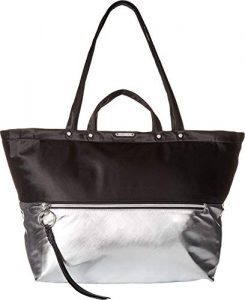There are many, many people on the Internet posing as Kibbe “experts,” whether they’re making videos, writing blog posts, charging for typings, offering advice on forums, or some combination of the above. I do not consider myself a Kibbe expert as in, “I can ‘type’ you just as well as David can!” But I have had the privilege of being able to work with David for the past few years managing online communities with his participation and blessing, so when I see people spreading incorrect information, it is very frustrating for me. I thought I would share some signs that will help you distinguish people who have an understanding of how David’s system works in 2019, versus people whose understanding of the system reflects the long line of misapplications and misinterpretations of his work.
Now, I will also say that in the early years of this blog, I may have committed some of these “sins,” because we simply didn’t have the information and access to David Kibbe that we have now. (If you see a post that seems like it reflects these ideas and doesn’t have a note saying it’s outdated, please let me know so I can add one!)
1. They use Classic, Gamine, and Natural.
We have known for years that David no longer puts people in these Image IDs. Everyone is either a little more yin or a little more yang. If someone is making content and using these IDs, they are either unaware of how David works now, or they are including them knowing that David doesn’t use them, which is worse, because they are knowingly spreading out-of-date information.
2. They use the terms “body type” or “Image Archetype/IA.”
These are not terms David uses. “Body type” implies that each Image ID has to look a particular way, when there are as many ways to get to a certain yin/yang balance as there are people within that yin/yang balance. I don’t expect another FG to be my body twin; we share a juxtaposition of yin and yang with a little more yang, not a particular shape. And “Image Archetype” comes from a copycat system and it’s a sign that the way they are more familiar with what they’re calling Kibbe doesn’t actually primarily come from David’s work.
3. They have galleries and Pinterest boards of “[clothing item] for the types.”
This is looking at David’s work in a prescripitivist way, and it’s not the way he works at all. Yes, the book has recommendations, but over 30 years have passed, and the way clothes are made now is very different. In addition, the recommendations in the book were never meant to limit you, but to paint a picture. In 2019 Kibbe, you think about an outfit from head to toe and how to make it work with your yin/yang balance. When people from the Facebook groups started going to see David in person, it was amazing just how much different the way he actually styles people in particular Image IDs is from the image we held in our heads. And frequently what people are positing as a suggestion for an Image ID doesn’t make sense, like dresses that clearly require a strong shoulderline to hang correctly being suggested for a Romantic, or they’re very limited, like SN=90s movie art teacher (which is so bizarre to me, considering that the SN combo of strong-but-sensual is the kind of beauty I see most honored in our current culture).
4. They use “masculine” and “feminine.”
In the 1920s, Belle Northrup specifically selected “yin” and “yang” to avoid the feminine/masculine dichotomy. Your Image ID reveals your special kind of feminine beauty, if that is how you wish you to be seen. Many women held up as a paradigm of feminine beauty are, in fact, in Image IDs that are not yin at all.
5. Their information contradicts David’s.
They say celebrities are in different Image IDs than David has said, or they tell you that you can be tall and still be a Theatrical Romantic if you “look short.” If you’re new to Kibbe, though, you may not be able to sift through what is in line with what David says and what isn’t.
6. They use the quiz.
The quiz as a tool is no longer necessary, and is in fact discouraged because you are looking at features in isolation, not the gestalt of your yin/yang balance. And David has written a series of exercises, which are a far better means of getting to your Image ID than trying to figure out if your legs and arms are short or slightly short.
7. They type you.
Even if I have an idea of someone’s Image ID, I would never tell them. It is their journey to find out. If someone places themselves in an Image ID that they are clearly not, like the tall TR example mentioned above, then I would mention that, or I will respond to questions in comments based on how someone is describing themselves. But I would never look at someone’s pictures and tell them what Image ID I think they are, and I would definitely never accept money for this. People who understand Kibbe understand that David can’t teach you to see the way he does, and that’s okay. He can help you see yourself, but being able to “type” your friends and family isn’t the point. He is not like Carol Tuttle, who puts out content to teach you how to type other people. The only people who can really tell you your Image ID are a) David and b) yourself.
This is really just the beginning, but these are some of the clearest and most common tells that someone is not giving you the correct information about David Kibbe’s work. I also have a Kibbe FAQ, and David Kibbe’s new website is a great way to get an understanding of how he actually works.

